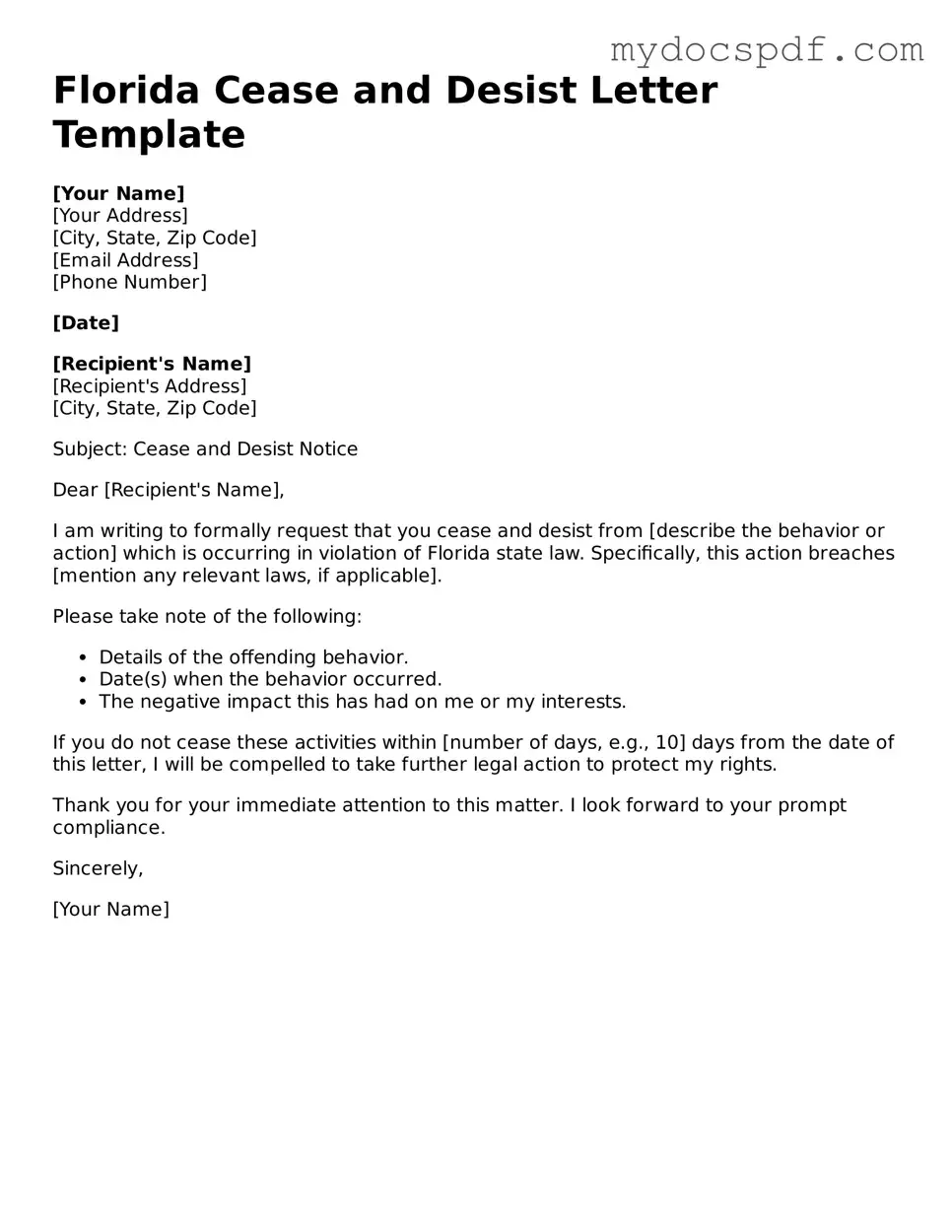Fillable Florida Cease and Desist Letter Document
A Florida Cease and Desist Letter is a formal document used to request an individual or organization to stop engaging in certain activities that are deemed harmful or unlawful. This letter serves as a warning and outlines the actions that must be taken to avoid further legal action. Understanding this form is essential for anyone seeking to protect their rights and interests in the state of Florida.
Access Editor Here
